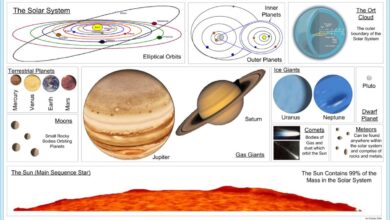System Analysis: 7 Powerful Steps to Master the Process
Ever wondered how complex software or business systems are built from scratch? It all starts with one crucial phase: system analysis. This powerful process uncovers needs, solves problems, and lays the foundation for success.
What Is System Analysis and Why It Matters

System analysis is the structured approach used to study a system or its components to identify its objectives, functions, and requirements. It’s the starting point for any major IT or business transformation project. Whether you’re developing a new software application, optimizing a business process, or integrating new technology, system analysis ensures you understand the ‘what’ and ‘why’ before jumping into the ‘how’.
At its core, system analysis is about asking the right questions. What problem are we solving? Who are the users? What data is involved? How does the current system fall short? By answering these, analysts bridge the gap between business needs and technical solutions.
Definition and Core Concepts
System analysis involves examining an existing system—whether manual or automated—to determine how it works and how it can be improved. According to the IEEE Computer Society, it’s a critical phase in the systems development life cycle (SDLC) that focuses on requirements gathering and feasibility assessment.
A ‘system’ in this context can be anything: a payroll process, a customer service workflow, or an entire enterprise resource planning (ERP) platform. The goal of system analysis is not just to describe the system, but to model it, evaluate it, and propose improvements.
- A system is a set of interrelated components working together toward a common goal.
- Analysis means breaking down the system to understand its parts and interactions.
- The output is a clear set of functional and non-functional requirements.
Historical Evolution of System Analysis
The roots of system analysis trace back to the mid-20th century, during the rise of operations research and management science. As organizations began adopting computers for data processing in the 1950s and 60s, the need for structured methods to design and evaluate systems became evident.
By the 1970s, structured analysis emerged as a formal methodology, introducing tools like data flow diagrams (DFDs) and entity-relationship models. The work of pioneers like Tom DeMarco and Yourdon helped standardize practices. Today, system analysis has evolved to include agile methods, user-centered design, and real-time data modeling.
“The purpose of computing is insight, not numbers.” – Richard Hamming. This quote captures the essence of system analysis: it’s not just about technology, but about understanding.
The Key Objectives of System Analysis
System analysis isn’t just a box to check in a project plan—it has clear, measurable goals that drive project success. These objectives ensure that the final solution aligns with business strategy, user needs, and technical feasibility.
Without well-defined objectives, projects risk scope creep, budget overruns, and user dissatisfaction. Let’s explore the primary aims of system analysis and how they contribute to effective system design.
Identifying Business Needs and Problems
One of the first tasks in system analysis is to pinpoint the real issues a business faces. This goes beyond surface-level complaints. For example, if a company says, “Our sales reporting is slow,” the analyst digs deeper: Is the database inefficient? Are users entering data incorrectly? Is there no automated reporting tool?
Techniques like stakeholder interviews, surveys, and process observation help uncover the root causes. The analyst then documents these needs in a formal requirements specification, ensuring everyone agrees on the problem before proposing solutions.
Defining System Requirements
Once the problem is clear, the next step is defining what the new system must do. Requirements are typically divided into two categories: functional and non-functional.
- Functional requirements describe what the system should do (e.g., ‘The system must allow users to reset their password’).
- Non-functional requirements define how the system should perform (e.g., ‘The system must load pages in under 2 seconds’).
These requirements become the blueprint for developers and the benchmark for testing. Tools like use case diagrams and user stories help make them tangible.
The 7-Step System Analysis Process
To turn chaos into clarity, system analysts follow a structured, step-by-step approach. While methodologies may vary, most processes include seven essential stages. Mastering these steps ensures thoroughness, reduces risk, and increases the likelihood of project success.
Step 1: Preliminary Investigation
Also known as the feasibility study, this initial phase determines whether a project is worth pursuing. Analysts assess the problem, gather high-level requirements, and evaluate technical, economic, and operational feasibility.
Key activities include:
- Identifying the project sponsor and stakeholders.
- Conducting initial interviews with key users.
- Reviewing existing documentation and systems.
- Producing a feasibility report with recommendations.
If the project passes this stage, it moves to detailed analysis.
Step 2: Information Gathering
This is where the real detective work begins. Analysts collect detailed data about current processes, user behaviors, and system limitations. Common techniques include:
- Interviews: One-on-one or group discussions with users and managers.
- Questionnaires: Useful for gathering input from a large number of users.
- Observation: Watching how people interact with current systems.
- Document analysis: Reviewing manuals, reports, and system logs.
The goal is to get a 360-degree view of how things work today.
Step 3: Data Modeling and Process Analysis
With raw data in hand, analysts begin modeling. This involves creating visual representations of data flows, business processes, and system interactions.
Popular modeling tools include:
- Data Flow Diagrams (DFDs): Show how data moves through a system.
- Entity-Relationship Diagrams (ERDs): Map data entities and their relationships.
- Use Case Diagrams: Illustrate how users interact with the system.
These models help identify inefficiencies, redundancies, and opportunities for automation.
Tools and Techniques Used in System Analysis
Modern system analysis relies on a mix of traditional and digital tools to capture, analyze, and communicate requirements. Choosing the right tool depends on the project’s size, complexity, and methodology.
Structured Analysis Tools
Structured analysis uses a top-down approach to break down complex systems into manageable parts. Key tools include:
- Data Flow Diagrams (DFDs): Developed by Larry Constantine, DFDs use symbols to represent processes, data stores, data flows, and external entities. They are excellent for showing how information moves through a system.
- Decision Trees and Tables: Help model complex business rules and logic. For example, a decision table can define when a customer qualifies for a discount.
- Structured English: A pseudo-language that describes processes in a clear, unambiguous way, bridging the gap between natural language and programming logic.
These tools are especially useful in waterfall-style projects where requirements are defined upfront.
Object-Oriented Analysis Methods
In object-oriented system analysis, the focus shifts from processes to objects—entities that combine data and behavior. This approach is common in modern software development.
Key techniques include:
- Unified Modeling Language (UML): A standardized modeling language with diagrams like class diagrams, sequence diagrams, and activity diagrams. Learn more at uml.org.
- User Stories: Short, simple descriptions of a feature from the user’s perspective (e.g., ‘As a customer, I want to view my order history so I can track past purchases’).
- Use Cases: More detailed than user stories, use cases describe interactions between actors and the system under specific conditions.
These methods support iterative development and are widely used in agile environments.
The Role of the System Analyst
The system analyst is the linchpin of any successful project. They are not just technical experts but also communicators, problem-solvers, and business strategists. Their role bridges the gap between technical teams and business stakeholders.
Key Responsibilities and Skills
A system analyst wears many hats. Their responsibilities include:
- Gathering and documenting requirements.
- Conducting feasibility studies.
- Designing system models and prototypes.
- Collaborating with developers, testers, and project managers.
- Ensuring the final system meets user needs.
To excel, analysts need a mix of hard and soft skills:
- Technical skills: Understanding databases, programming concepts, and system architecture.
- Communication skills: Ability to explain complex ideas in simple terms.
- Problem-solving: Identifying root causes and proposing effective solutions.
- Attention to detail: Ensuring no requirement is overlooked.
“A good analyst doesn’t just collect requirements—they uncover what users really need, even if they can’t articulate it.”
Types of System Analysts
Not all system analysts are the same. Depending on the organization and project, roles can vary:
- Business Systems Analyst: Focuses on aligning IT solutions with business goals.
- Technical Analyst: Works closely with developers on system architecture and integration.
- Data Analyst: Specializes in data modeling, reporting, and analytics.
- Systems Architect: Designs the overall structure of complex systems.
Many analysts start in one role and evolve into others as they gain experience.
Challenges in System Analysis
Despite its importance, system analysis is not without challenges. Missteps at this stage can ripple through the entire project lifecycle, leading to costly rework or failure.
Dealing with Vague or Changing Requirements
One of the biggest hurdles is unclear or shifting requirements. Stakeholders may not know what they want, or their needs may evolve during the project. This is especially common in fast-paced industries.
To mitigate this, analysts use techniques like:
- Prototyping: Building a mockup to help users visualize the system.
- Iterative feedback: Regular reviews with stakeholders to validate assumptions.
- Agile methodologies: Breaking the project into small, manageable sprints.
Clear documentation and change control processes are essential to manage scope creep.
Managing Stakeholder Expectations
Stakeholders often have conflicting priorities. The finance team may want cost control, while marketing wants rapid feature deployment. The analyst must balance these demands and set realistic expectations.
Effective communication is key. Regular updates, visual models, and joint decision-making sessions help build trust and alignment. Transparency about trade-offs—such as time vs. functionality—ensures everyone is on the same page.
Best Practices for Effective System Analysis
To maximize the impact of system analysis, teams should follow proven best practices. These guidelines help ensure thoroughness, accuracy, and stakeholder buy-in.
Engage Stakeholders Early and Often
One of the most effective ways to ensure project success is early and continuous stakeholder involvement. Don’t wait until the end to show your work—involve users from day one.
Host workshops, conduct usability tests on prototypes, and share progress reports regularly. This not only improves requirements quality but also increases user adoption later.
Use Visual Models to Clarify Complexity
Words alone can be ambiguous. Visual models—like flowcharts, wireframes, and UML diagrams—make complex systems easier to understand.
For example, a process flow diagram can reveal bottlenecks that weren’t apparent in written descriptions. These visuals serve as a common language between technical and non-technical teams.
Validate Requirements Before Development
Before handing off requirements to developers, validate them with stakeholders. Ask: Does this accurately reflect your needs? Are there any gaps or contradictions?
Techniques like requirements walkthroughs and sign-offs help catch issues early. According to the Software Engineering Institute, fixing a requirement error during analysis costs 100 times less than fixing it after deployment.
System Analysis in Agile vs. Waterfall Methodologies
The approach to system analysis varies significantly between traditional (Waterfall) and modern (Agile) development methodologies. Understanding these differences is crucial for choosing the right strategy.
System Analysis in Waterfall
In the Waterfall model, system analysis is a distinct, upfront phase. All requirements are gathered, documented, and approved before design and development begin.
Pros:
- Clear scope and documentation.
- Easy to manage and budget.
- Suitable for stable, well-understood projects.
Cons:
- Little flexibility for changes.
- Risk of outdated requirements by launch.
- Delayed user feedback.
This approach works well for regulated industries like healthcare or finance, where documentation is critical.
System Analysis in Agile
In Agile, system analysis is iterative and ongoing. Requirements are gathered in chunks (user stories) and refined throughout the project.
Analysts work closely with product owners and development teams in sprints. They participate in backlog grooming, sprint planning, and review meetings.
Pros:
- Adaptable to changing needs.
- Frequent user feedback.
- Faster delivery of value.
Cons:
- Requires high collaboration.
- Can lack comprehensive documentation.
- Challenging for large, complex systems.
Agile is ideal for startups or projects with uncertain requirements.
What is the main goal of system analysis?
The main goal of system analysis is to understand the requirements of a system, identify problems in the current process, and define a clear, feasible solution that meets business and user needs.
What are the key skills of a system analyst?
Key skills include requirements gathering, problem-solving, communication, data modeling, and familiarity with both business processes and technical systems. Soft skills like active listening and negotiation are also crucial.
How does system analysis differ from system design?
System analysis focuses on ‘what’ the system should do by identifying requirements and problems. System design focuses on ‘how’ to implement the solution, including architecture, interfaces, and technology choices.
Can system analysis be done in Agile projects?
Yes, system analysis is essential in Agile projects, but it’s done iteratively. Analysts work in sprints, refining user stories and requirements continuously rather than all at once upfront.
What tools do system analysts commonly use?
Common tools include UML, BPMN, DFDs, ERDs, JIRA for backlog management, and prototyping tools like Figma or Balsamiq. The choice depends on the project and methodology.
System analysis is the backbone of successful system development. Whether you’re working on a small app or a large enterprise solution, taking the time to analyze thoroughly pays off in reduced risks, lower costs, and higher user satisfaction. By following structured processes, using the right tools, and engaging stakeholders, analysts turn vague ideas into actionable blueprints. In a world driven by technology, mastering system analysis isn’t just valuable—it’s essential.
Further Reading:









